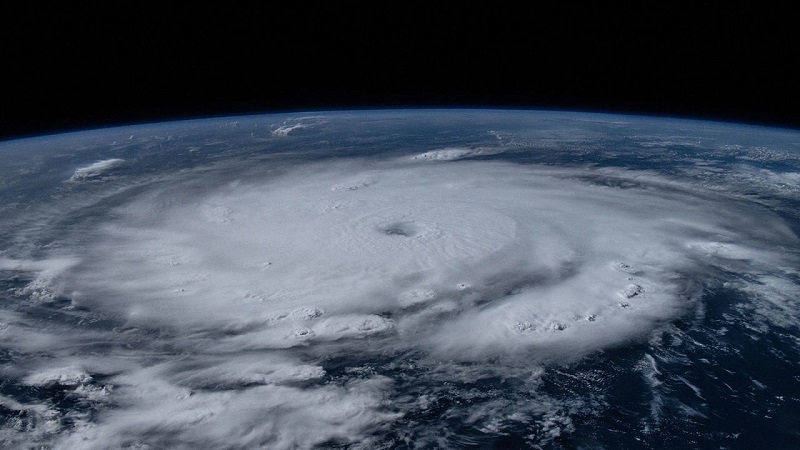Hurricane Beryl Devastates the Caribbean: A Wake-Up Call for Preparedness
The Caribbean has once again found itself in the crosshairs of a devastating natural disaster. Hurricane Beryl, a powerful storm that unleashed record winds and torrential rains, has caused widespread destruction across the region. As communities grapple with the aftermath, the disaster has raised urgent questions about the region’s preparedness and response capabilities.
The Path of Destruction
Hurricane Beryl made landfall with unprecedented ferocity, bringing winds exceeding 150 mph and causing extensive damage to infrastructure, homes, and the natural environment. Islands such as Barbados, Dominica, and Saint Lucia have been particularly hard hit, with reports of flattened homes, uprooted trees, and widespread power outages.
In Barbados, the Bridgetown Fisheries was one of the many facilities devastated by the hurricane. Fishing vessels were upended, and the local economy, heavily reliant on fishing and tourism, is facing significant challenges. In Dominica, which is still recovering from the impacts of Hurricane Maria in 2017, Beryl’s impact has set back progress, highlighting the island’s vulnerability to such extreme weather events.
Human Impact and Community Resilience
The human toll of Hurricane Beryl is still being assessed, but early reports indicate numerous injuries and a rising death toll. Thousands have been displaced, seeking shelter in overcrowded evacuation centers. The psychological impact on residents, who have faced repeated hurricanes over the years, cannot be overstated. The trauma of losing homes, livelihoods, and in some cases, loved ones, adds a significant emotional burden to the physical destruction.
However, amid the devastation, stories of community resilience and solidarity have emerged. Local authorities, volunteers, and international aid organizations have mobilized swiftly to provide emergency relief. Efforts include distributing food, water, medical supplies, and providing temporary shelters for those displaced by the hurricane.
Preparedness and Response Challenges
The scale of destruction wrought by Hurricane Beryl has exposed significant gaps in the Caribbean’s disaster preparedness and response frameworks. Despite improvements since past hurricanes, the region still struggles with insufficient infrastructure and resources to effectively manage such powerful storms.
One of the critical challenges is the aging and vulnerable infrastructure in many Caribbean islands. Buildings and roads, often not built to withstand such extreme weather, suffer extensive damage, complicating rescue and recovery operations. Additionally, power grids and communication networks are easily disrupted, hindering coordination and dissemination of crucial information during emergencies (euronews).
The financial constraints faced by many Caribbean nations further exacerbate these challenges. Limited budgets mean that investments in disaster-resistant infrastructure and advanced warning systems are often inadequate. International aid and loans provide some relief, but they are not a sustainable solution to the recurring problem of hurricane damage.
Climate Change and Increasing Storm Intensity
The increasing frequency and intensity of hurricanes like Beryl are closely linked to climate change. Rising sea temperatures contribute to the formation of more powerful storms, while higher sea levels increase the risk of storm surges and coastal flooding. Scientists warn that without significant action to address climate change, the Caribbean will continue to face escalating threats from such natural disasters.
This reality underscores the urgent need for comprehensive climate adaptation strategies. Strengthening building codes, enhancing coastal defenses, and investing in resilient infrastructure are critical steps that Caribbean nations must take. Moreover, regional cooperation and support from the international community are essential in developing and implementing these strategies effectively.
International Response and Aid
In the wake of Hurricane Beryl, the international community has rallied to support the Caribbean. Humanitarian aid, financial assistance, and technical support have poured in from governments, non-governmental organizations (NGOs), and international agencies. The United Nations has launched an emergency appeal to provide immediate relief and support long-term recovery efforts.
Countries like the United States, Canada, and the United Kingdom have sent emergency response teams and supplies. International NGOs such as the Red Cross and Oxfam are on the ground, providing critical aid and helping to coordinate relief efforts. These actions are vital in addressing the immediate needs of affected communities and setting the stage for long-term recovery.
Lessons for the Future
Hurricane Beryl’s devastation serves as a stark reminder of the need for improved disaster preparedness and climate resilience in the Caribbean. The lessons learned from this storm must be translated into concrete actions to mitigate the impact of future hurricanes. Key areas of focus should include:
- Infrastructure Improvement: Investing in the construction and retrofitting of buildings to withstand hurricane-force winds and flooding. This includes public buildings, homes, and critical infrastructure such as hospitals and schools.
- Enhanced Early Warning Systems: Developing advanced meteorological systems to provide accurate and timely warnings. This enables communities to evacuate and prepare more effectively, reducing the risk to life and property.
- Community Education and Training: Increasing public awareness about disaster preparedness and response. Training programs can empower communities to take proactive steps in safeguarding their homes and families.
- Climate Adaptation Strategies: Implementing measures to address the root causes of increasing hurricane intensity. This includes adopting renewable energy sources, protecting coastal ecosystems, and reducing greenhouse gas emissions.
- Regional and International Cooperation: Strengthening partnerships within the Caribbean and with the global community. Shared resources, knowledge, and financial support are crucial in building resilience against natural disasters.
Conclusion
Hurricane Beryl has left an indelible mark on the Caribbean, highlighting the region’s vulnerability to extreme weather events and the urgent need for enhanced preparedness and resilience. While the immediate focus is on recovery and relief, the long-term goal must be to build stronger, more resilient communities capable of withstanding future storms. The path forward requires a concerted effort from local governments, international partners, and the communities themselves to ensure that the lessons of Hurricane Beryl lead to meaningful and lasting change
